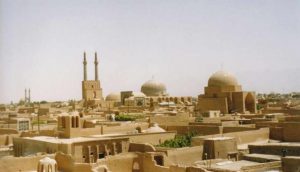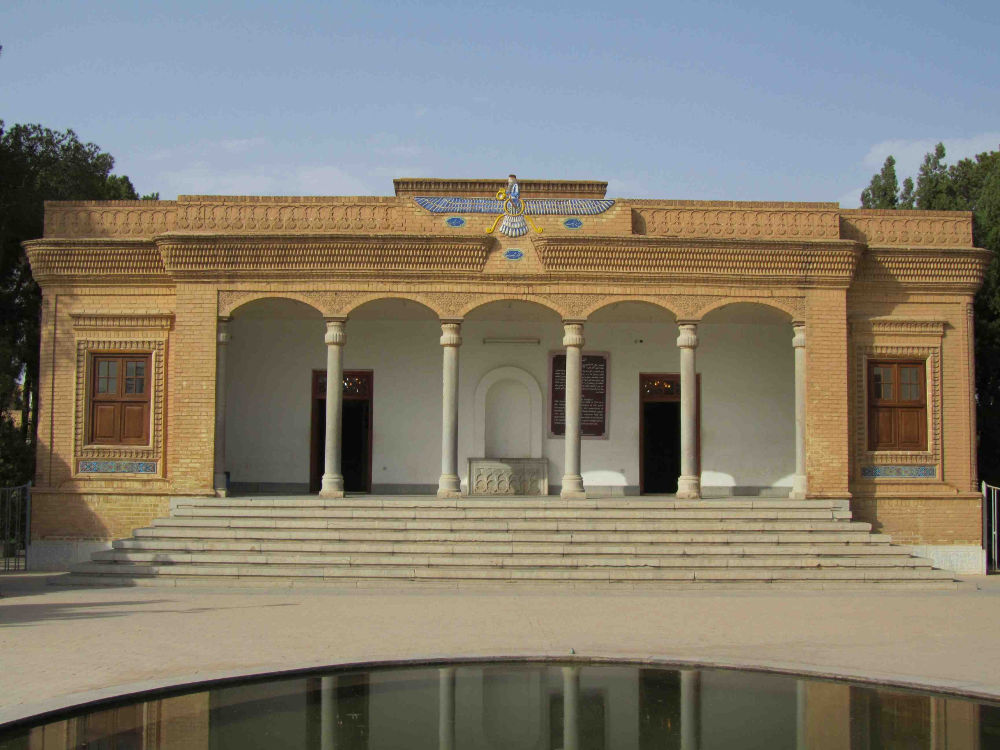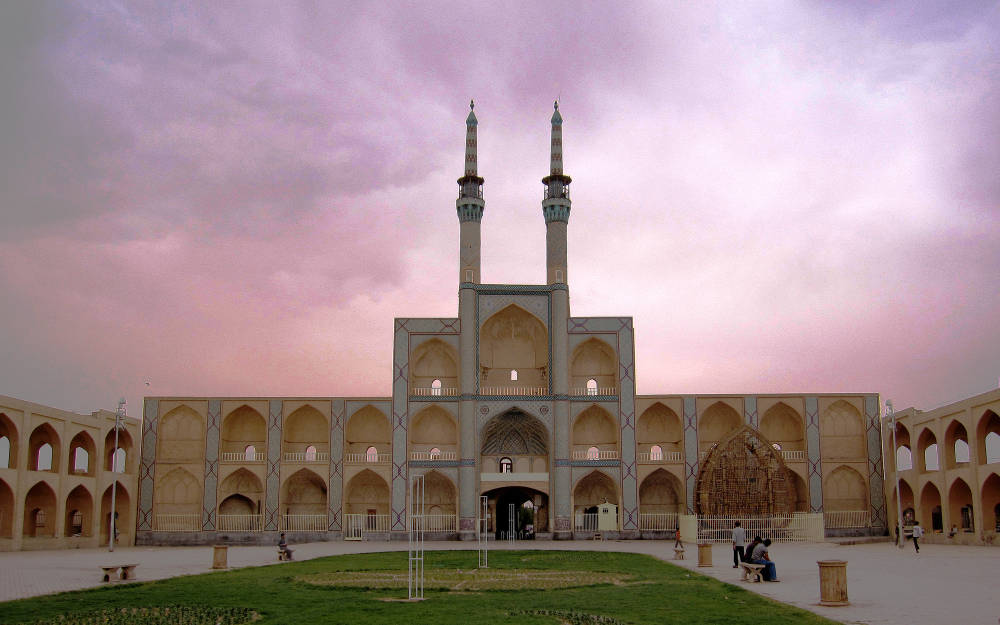Yazd city of feast and worship
Yazd capital of Yazd province in Iran which was described as the “noble city of Yazd” by Marco Polo, is one of the most incredible unique Persian architecture in South of Isfahan. The name is derived from Yazdegerd I, ruler of Persia. It is now the last center of Zoroastrian in Iran.
The historical city of Yazd is recognized as a World Heritage Site by UNESCO since 2017. It is also called “The City of Windcatchers” and well known for its Abanbar, Qanats, Yakhchals, Zoroastrian fire temples and Silk Road.
Jame Mosque
This magnificent building the 14th–century structure has the highest minarets in the country and exemplifies Iranian-Islamic architecture with its delicate blue-mosaic tile work.
The Jameh Mosque is particularly notable for the mosaics and prevalence of faience – a form of tiling is formed of different colored pieces that are sandwiched together to create an extraordinary space.
The tile work has recently been skilfully restored and a modern library built to house the mosque's valuable collection of books and manuscripts.
Zoroastrian fire temple
Yazd is the home to several sites of religious and historic interest. The Ateshkadeh, or Fire Temple, is the most important, containing a central fire that has allegedly been burning since the 5th century A.D which is visible through a window from the entrance hall.
It is believed that the fire burning inside has been there nonstop since the year 470. Above the entrance of this building, there is symbolic bird-man which is the symbol of Zoroaster.
Chak Chak
Out in the desert, about 70 kilometers from Yazd, is Iran’s most important Zoroastrian pilgrimage site.
Chak Chak attracts thousands of pilgrims for an annual Zoroastrian festival between 14 and 18 June.
The Pir-e-Sabz Fire Temple cut into the cliff-side has a wonderful brass door embossing with the likeness of Zoroaster.
Chak Chak, meaning ‘drip drip,’ in Farsi contains a dripping spring, the mountain weeping in remembrance of Princess Nikbanu.
Amir Chakhmaq Complex
Yazd’s architectural centerpiece, the Amir Chakhmaq complex is one of the fabulous places in the city. It consists of a mosque, a caravanserai, a tekyeh, a bathhouse, a well and a confectionery and one of the largest hosseiniehs in the country with some stunning Iwans which light up and glow after sunset.
The whole structure comes from the 15th century. Since it’s located not in the old town itself it seems like it’s most popular among locals who gather on the square to celebrate the time together.
Bagh-E Dowlatabad
A peaceful and neglected residence for the regent Karim Khan. Daulatabad garden is a quintessential Persian garden of trees and water fountains enclosed by high walls. The high point, however, is the wind catchers which are so unique to Yazd. They were used cleverly to trap wind and guide it down to cool the water below thereby cooling the room too.
The 33-meter central badgir, as well as the stained-glass windows, make for a magical paradise, which you won’t find elsewhere like that.
If you are looking for an outstanding historical place to visit, Yazd is highly recommended. this is a place where you can't easily forget.



